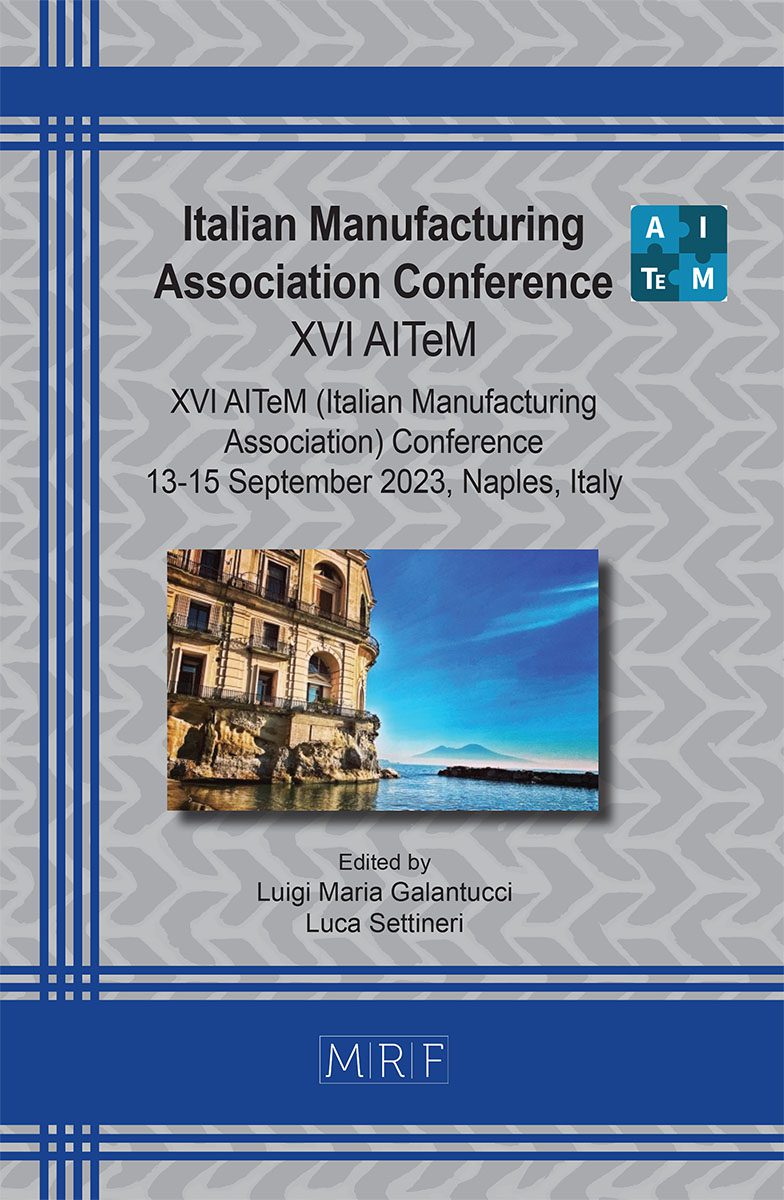The effects of dry grinding processing parameters on the electromagnetic and geometrical properties of Nd2Fe14B permanent magnets
Lorenzo Cestone, Erica Liverani, Alessandro Ascari, Alessandro Fortunato
download PDFAbstract. The automotive industry has grown increasingly interested in electric propulsion over the past few years, which has led to an increase in engine and battery efficiency improvements. The study of rare earth permanent magnets has recently become essential for the development and improvement of electric engines because rotors are constructed of permanent magnets that interact with the stator windings. Due to its strong remanence and coercive field, neodymium magnet is the most frequent rare earth employed in electric motors. Nd2Fe14B magnets are made by sintering in the simple geometries of prismatic, cubic, and cylindrical, and they typically require machining to achieve the final shape necessary for the construction and assembly of the rotor. However, prismatic Nd2Fe14B row materials that have just been sintered are extremely brittle and challenging to produce; as a result, they are typically finished through grinding with a CBN grinding wheel. This study’s objective is to evaluate the effects of a dry grinding process with a wet traditional one through an experimental campaign. Process parameters such as cutting speed and feed rate were varied and surface roughness and morphology were compared, together with the magnetic field loss due to the increment of the temperature occurring during the processes. Due to the large number of electric motors that are anticipated to be manufactured in the upcoming years, dry grinding could represent the turning point in terms of eco-sustainability of the process.
Keywords
Grinding, Cubic Boron Nitride (CBN)
Published online 9/5/2023, 8 pages
Copyright © 2023 by the author(s)
Published under license by Materials Research Forum LLC., Millersville PA, USA
Citation: Lorenzo Cestone, Erica Liverani, Alessandro Ascari, Alessandro Fortunato, The effects of dry grinding processing parameters on the electromagnetic and geometrical properties of Nd2Fe14B permanent magnets, Materials Research Proceedings, Vol. 35, pp 444-451, 2023
DOI: https://doi.org/10.21741/9781644902714-53
The article was published as article 53 of the book Italian Manufacturing Association Conference
![]() Content from this work may be used under the terms of the Creative Commons Attribution 3.0 license. Any further distribution of this work must maintain attribution to the author(s) and the title of the work, journal citation and DOI.
Content from this work may be used under the terms of the Creative Commons Attribution 3.0 license. Any further distribution of this work must maintain attribution to the author(s) and the title of the work, journal citation and DOI.
References
[1] Zhou, X., Huang, A., Cui, B., Sutherland, J.W., 2021. Techno-economic Assessment of a Novel SmCo Permanent Magnet Manufacturing Method. Procedia CIRP 98, 127–132. https://doi.org/10.1016/j.procir.2021.01.017
[2] Baldi, L., Peri, M., Vandone, D., 2014. Clean energy industries and rare earth materials: Economic and financial issues. Energy Policy 66,53–61. https://doi.org/10.1016/j.enpol.2013.10.067
[3] Constantinides, S., n.d. The demand for rare earth materials in permanent magnets
[4] Brown, D.N., Smith, B., Ma, B.M., Campbell, P., 2004a. The Dependence of Magnetic Properties and Hot Workability of Rare Earth-Iron-Boride Magnets Upon Composition. IEEE Trans. Magn. 40, 2895–2897. https://doi.org/10.1109/TMAG.2004.832240
[5] Mallipeddi, D., Norell, M., Sosa, M., Nyborg, L., 2019. The effect of manufacturing method and running-in load on the surface integrity of efficiency tested ground, honed and superfinished gears. Tribology International 131, 277–287. https://doi.org/10.1016/j.triboint.2018.10.051
[6] Influence of grinding parameters on surface temperature and burn behaviours of grinding rail; B. Lin, K. Zhou, J. Guo, Q.Y. Liu, W.J. Wang
[7] Britton, R.D., Elcoate, C.D., Alanou, M.P., Evans, H.P., Snidle, R.W., 2000. Effect of Surface Finish on Gear Tooth Friction. Journal of Tribology 122, 354–360. https://doi.org/10.1115/1.555367
[8] Pavel, R., Srivastava, A., 2007. An experimental investigation of temperatures during conventional and CBN grinding. Int J Adv Manuf Technol 33, 412–418. https://doi.org/10.1007/s00170-006-0771-4
[9] Sarriegui, G., Martín, J.M., Burgos, N., Ipatov, M., Zhukov, A.P., Gonzalez, J., 2021. Effect of neodymium content and niobium addition on grain growth of Nd-Fe-B powders produced by gas atomization. Materials Characterization 172,110844.https://doi.org/10.1016/j.matchar.2020.110844
[10] Lerra, F., Grippo, F., Landi, E., Fortunato, A., 2022. Surface integrity evaluation within dry grinding process on automotive gears. Cleaner Engineering and Technology 9, 00522. https://doi.org/10.1016/j.clet.2022.100522
[11] Sharma, P., Verma, A., Sidhu, R.K., Pandey, O.P., 2005. Process parameter selection for strontium ferrite sintered magnets using Taguchi L9 orthogonal design. Journal of Materials Processing Technology 168, 147–151. https://doi.org/10.1016/j.jmatprotec.2004.12.003
[12] Sepehri-Amin, H., Liu, L., Ohkubo, T., Yano, M., Shoji, T., Kato, A., Schrefl, T., Hono, K., 2015a. Microstructure and temperature dependent of coercivity of hot-deformed Nd–Fe–B magnets diffusion processed with Pr–Cu alloy. Acta Materialia 99, 297–306. https://doi.org/10.1016/j.actamat.2015.08.013












